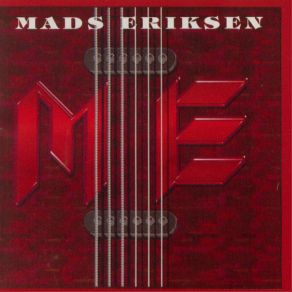Mads Eriksen
Download links and information about Mads Eriksen by Mads Eriksen. This album was released in 1995 and it belongs to Rock, Alternative genres. It contains 13 tracks with total duration of 51:23 minutes.

|
|
|---|---|
| Artist: | Mads Eriksen |
| Release date: | 1995 |
| Genre: | Rock, Alternative |
| Tracks: | 13 |
| Duration: | 51:23 |
| Buy it NOW at: | |
| Buy on iTunes $9.99 | |
Tracks
[Edit]| No. | Title | Length |
|---|---|---|
| 1. | Juvenile Fantasy | 3:56 |
| 2. | Barcelona Blues | 3:29 |
| 3. | Fanfare (To the Sounds of Life) | 2:19 |
| 4. | The Greatest Sacrifice | 6:13 |
| 5. | Cure for Evil | 5:18 |
| 6. | Serenading the Ocean | 6:32 |
| 7. | Siberia Sleighride | 3:19 |
| 8. | Barnstormer | 5:19 |
| 9. | Suburban Cowboy | 2:00 |
| 10. | Dublin Blues | 2:37 |
| 11. | Identity Parade | 3:12 |
| 12. | In the Highlands / Campfire Lullaby | 4:47 |
| 13. | Shelter and Comfort | 2:22 |
Details
[Edit]To hear myopic jazz purists tell it, there is absolutely no difference between instrumental jazz-rock fusion and instrumental rock. But, in fact, there is a world of difference, and jazz purists who make that foolish claim do a disservice to both. While fusionists like Al DiMeola and Scott Henderson combine jazz with rock and funk, instrumental rock is exactly that — it is rock without vocals and can be the instrumental equivalent of Led Zeppelin, Van Halen, Rush, or Deep Purple. Comparable to Steve Vai, Joe Satriani, and Randy Coven, Norwegian guitarist Mads Eriksen is a perfect example of a rock instrumentalist. This self-titled CD, which was recorded in 1993 and 1994, is loud and aggressive but intricate. Eriksen loves his power chords, but he doesn't live for bombast alone — and because of that intricacy, some people might compare the Scandinavian axeman to fusion guitarists. But, again, there is a major difference between what fusionists do and what a rock instrumentalist does. John McLaughlin and Pat Metheny are rock influenced,but have a jazz mentality — they live for improvisation, just like Charlie Christian, Grant Green, Barney Kessel, and Wes Montgomery before them. Eriksen, however, has a rock mentality. When Metheny's Letter From Home is playing, one hears a debt to Montgomery and Jim Hall; when this chopfest of a CD is playing, one realizes that Eriksen would have been perfect for Queensryche, Iron Maiden, Rush, or just about any other heavy metal, hard rock, or arena rock band that is both forceful and musical. However, being a solo artist is the ideal situation for Eriksen, because his electric guitar takes center stage (as opposed to serving the needs of a vocalist). Anyone who has spent a lot of time listening to Vai, Satriani, and Coven is advised to give this album a close listen.